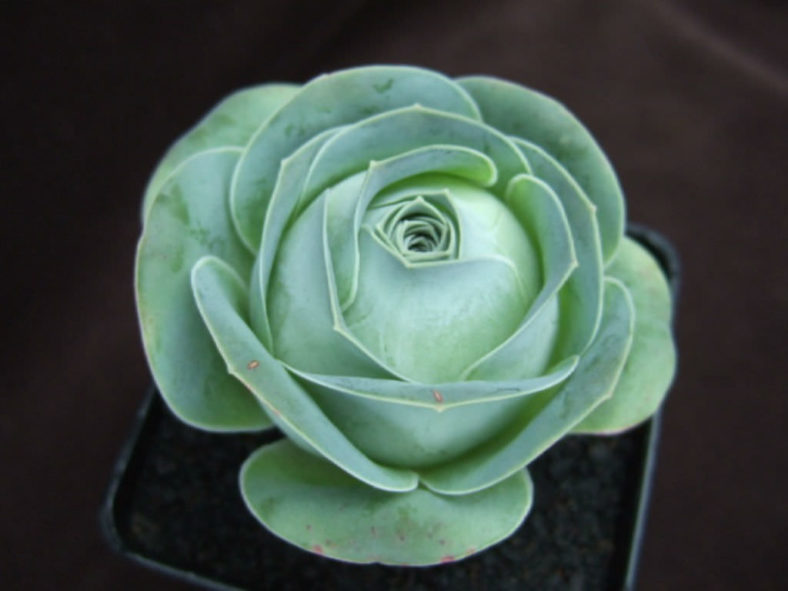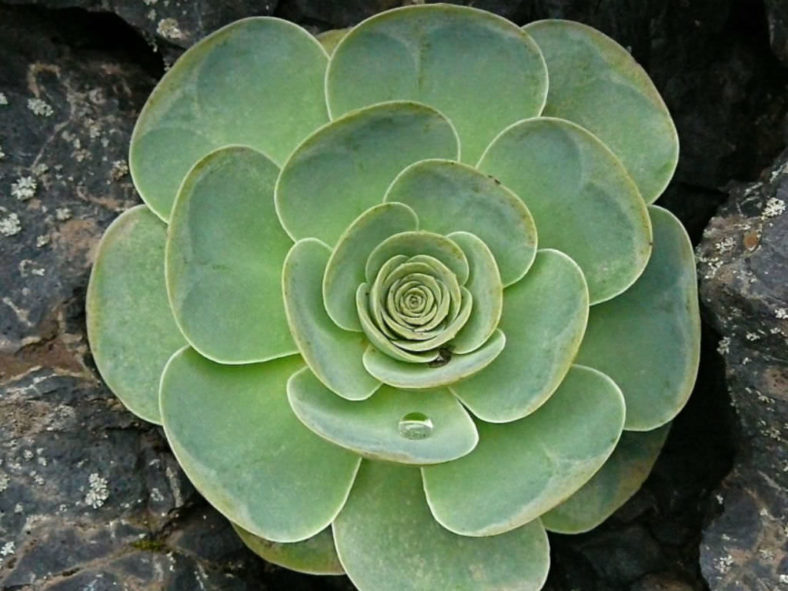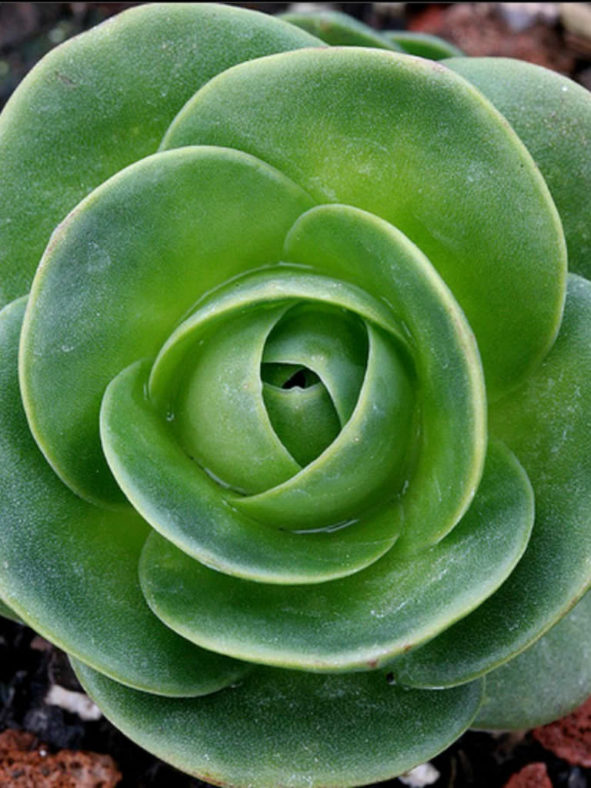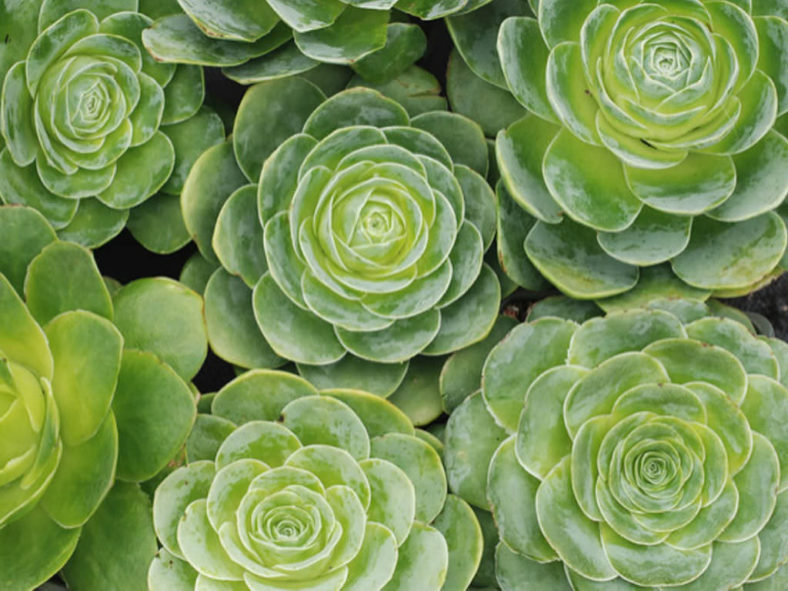Scientific Name
Aeonium diplocyclum (Webb ex Bolle) T.H.M. Mes
Synonym(s)
Greenovia diplocycla
Scientific Classification
Family: Crassulaceae
Subfamily: Sempervivoideae
Tribe: Aeonieae
Genus: Aeonium
Origin
Aeonium diplocyclum is native to the Canary Islands (La Palma, El Hierro, and La Gomera). It grows at elevations that range from 165 to 5,580 feet (50 to 1,700 m).
Description
Aeonium diplocyclum, formerly known as Greenovia diplocycla, is an attractive succulent that forms a solitary, monocarpic rosette of pale green leaves covered with a powdery bloom. The rosette can reach up to 7.2 inches (18 cm) in diameter. The leaves are fleshy and spoon-shaped and can grow up to 3.2 inches (8 cm) long and 2.6 inches (6.5 cm) wide. The inner leaves are erect and tightly closed during summer dormancy, when the rosette closes cup-like, covered with dry beige-red leaf sheaths.
The flowers are deep yellow, star-shaped, 19- to 24-merous, and appear in flat-topped, many-flowered clusters on densely leafy stalks in spring. The flower stalks can grow up to 8.8 inches (22 cm) tall.
Aeonium diplocyclum differs from Aeonium aureum in that it has larger flowers and a rosette that remains solitary and never produces offsets.

Hardiness
USDA hardiness zone 9a to 11b: from 20 °F (−6.7 °C) to 50 °F (+10 °C).
How to Grow and Care
Aeoniums do not like hot or dry weather. Therefore, they may go dormant in summer and do not require any water except in very dry conditions. In extreme heat, their leaves will curl to prevent excessive water loss. Growing them in moist shade will keep them growing, but their true growth season is winter to spring when temperatures are cool (65–75˚F / 18–24˚C) and damp. In the winter, water whenever the soil has dried out. Test by poking your finger down into the soil an inch or two. Too much moisture or allowing them to sit in wet soil will cause root rot.
A sandy loam or regular potting mix is better than a mix specifically for cacti and succulents since Aeonium needs moisture. If you are growing them in containers, repot them every 2 to 3 years with fresh potting soil.
See more at How to Grow and Care for Aeonium.
Propagate Aeoniums by stem cuttings, except for unbranched species, which die after flowering and are propagated from seed. Take cuttings when the plant is actively growing, usually in fall in USDA zones 9 through 11. Aeoniums go dormant in summer. Cuttings that are taken while plants are dormant do not root. Each rosette dies after it blooms.
See more at How to Propagate Aeonium.
Cultivars
Links
- Back to genus Aeonium
- Succupedia: Browse succulents by Scientific Name, Common Name, Genus, Family, USDA Hardiness Zone, Origin, or cacti by Genus
Photo Gallery
Click on a photo to see a larger version.


